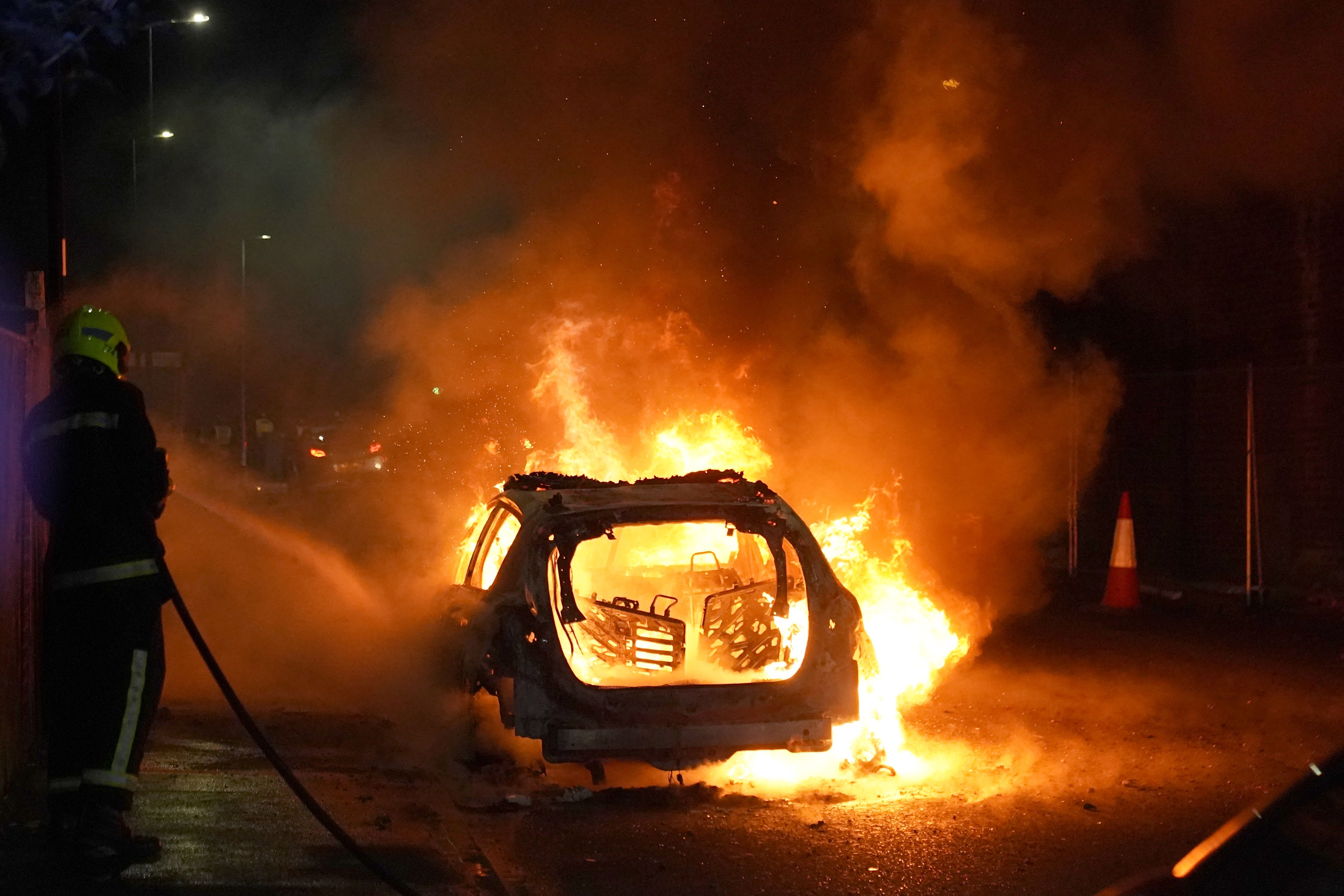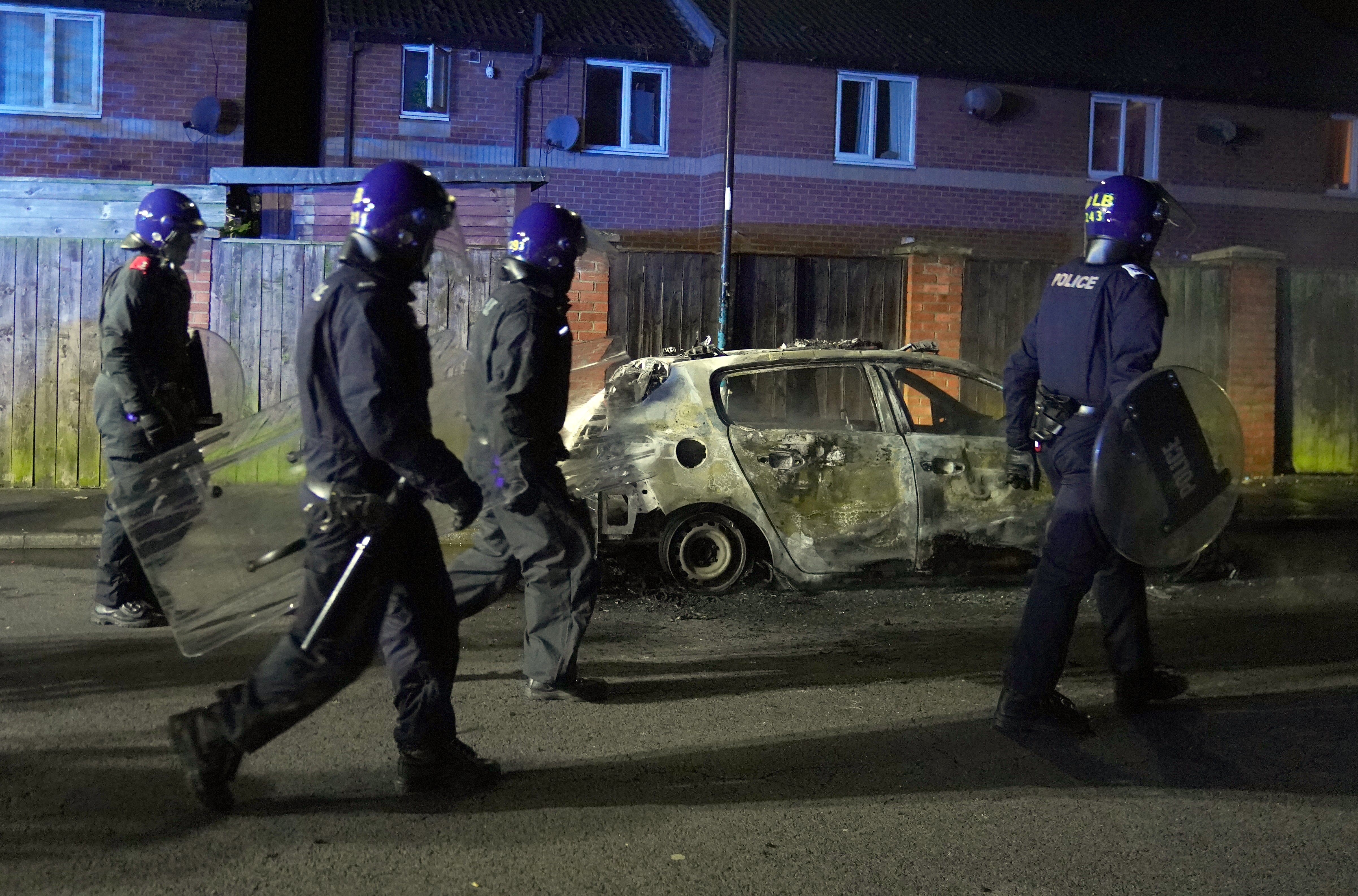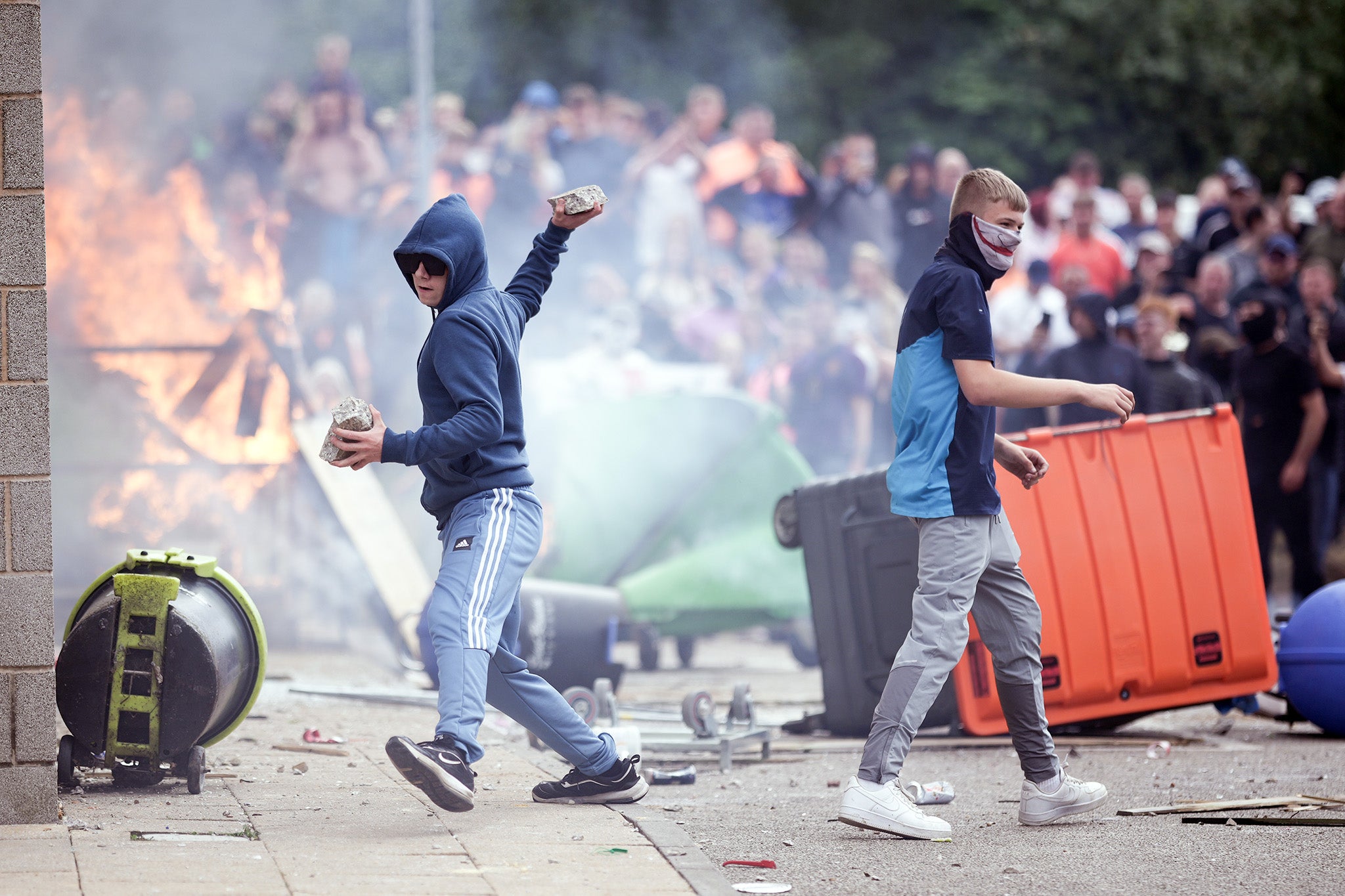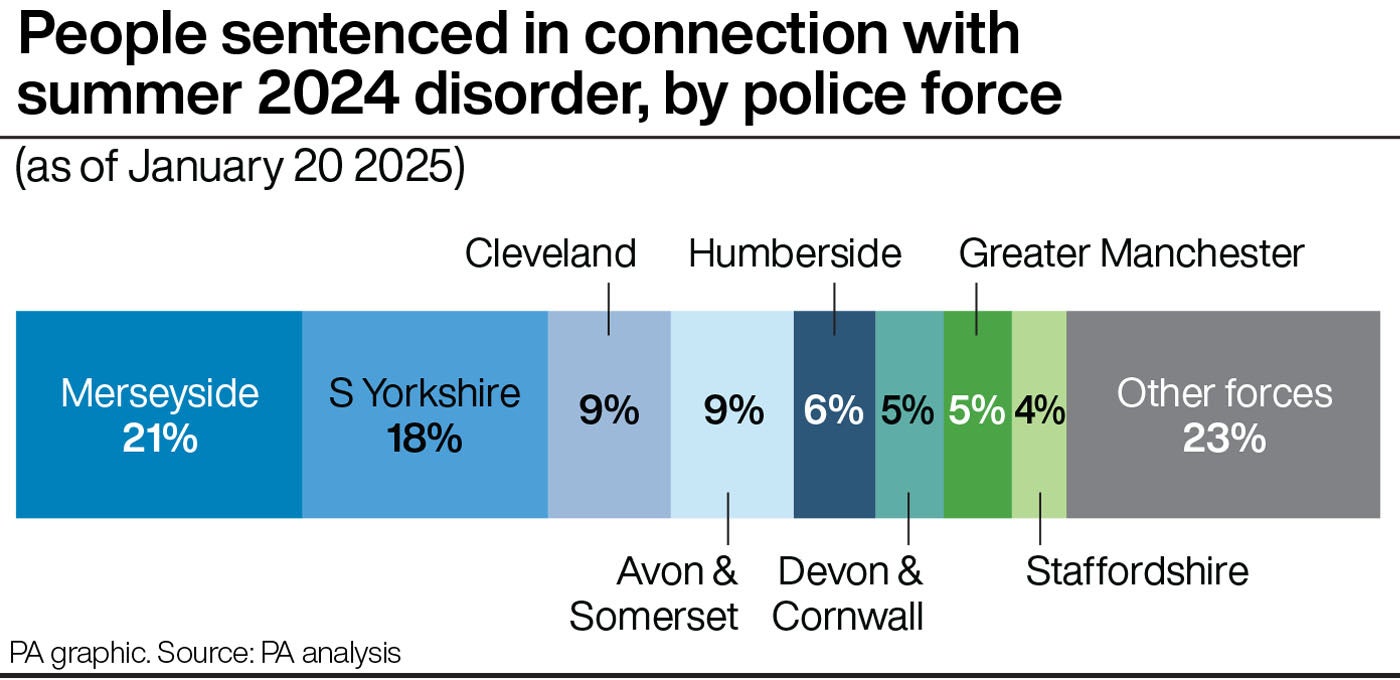The summer race riots that engulfed the nation in waves of violence had a grim and harrowing spark – a mass stabbing at a dance class in the seaside town of Southport, carried out by a teenager.
Axel Rudakubana, then 17, unleashed an attack on 30 July during a Taylor Swift-themed dance class, murdering three children and injuring eight others. The tragedy sent shockwaves throughout the country.
In the chaotic hours following the incident, misinformation began spreading online. Social media posts alleged that the attacker was a 17-year-old asylum seeker who had recently arrived in the country by boat, igniting a divisive narrative that fueled anger and unrest nationwide.
Among the accounts to peddle such claims was influencer Andrew Tate, who claimed the attacker was an “illegal migrant” and urged people to “wake up”, while Darren Grimes of GB News criticised MPs for calling “for more ‘refugees’ to be allowed in” on the same day as the attack.
English Defence League co-founder Tommy Robinson, whose real name is Stephen Yaxley-Lennon, shared a post he said suggested authorities were trying to “manipulate” the public over the attacker’s identity.
Nearly 450 people have been sentenced for offences in connection with the riots and disorder that broke out in parts of the country.

In the first press conference after the stabbing, at 6.30pm that day, Merseyside Police Chief Constable Serena Kennedy told journalists the suspect was originally from Cardiff.
But, the police statement did little to quell the misinformation spreading online. Police forces do not name suspects before they are charged, and Rudakubana would remain anonymous even after he was charged because of his age.
As floral tributes near the scene grew, so did speculation about who was behind the attack.
When prime minister Sir Keir Starmer visited to pay his respects the day after the stabbing, there were hostile shouts of: “How many more Starmer? When are you going to do something?”
By that evening, things began to turn violent.
A crowd gathered outside Southport mosque – which has no known links to Rudakubana – for a planned protest on the evening of 30 July. Shouts of “English ’til I die” were heard and bricks broken off from garden walls were used as missiles. Police officers initially seemed unprepared for the violence, without riot helmets or shields.

Footage showed crowds of men – at least one identified by antifascists Red Flare as an alleged member of the far-right Patriotic Alternative group – chanting and throwing bricks at riot police, who held shields to protect against incoming projectiles as a police van was set alight and other fires burned nearby.
The following week, when the first prison sentences were handed out for those involved, Recorder of Liverpool Andrew Menary KC described a “mob” using the “most foul and racist abuse”, smashing windows, hurling bricks and setting a police van alight.
He said: “This was large scale and very violent criminal activity made much worse by the fact that it was happening only a day after entirely different and utterly tragic events. The genuine and collective grief of the residents of Southport was hijacked by this callous behaviour.”
More than 93 officers were hurt, with injuries including fractured legs, knocked-out teeth and a broken jaw.
The day after, the clean up of Southport began, but by the evening violence had spread further afield – with demonstrations in London, Hartlepool in County Durham and Aldershot in Hampshire.

For the next week, as Rudakubana was charged, appeared before court and officially named, violent protests continued across the country.
Messaging platforms with anonymity features, such as Telegram, were then used to mobilise large groups. One channel on the Russian-owned platform – named ‘Southport Rise Up’ – had over 13,000 members at one point, as it continued to post locations for rioters to target.
Rioters smashed the windows of hotels in Rotherham and Tamworth, and set a library in Liverpool on fire.
There were ugly scenes of anti-immigration rioters attacking police and smashing the windows of an asylum seeker hotel in Rotherham. Masked men hurled lengths of wood, chairs and bottles, and sprayed fire extinguishers at officers outside after some 700 people gathered. At least 10 officers were injured, including one who was knocked unconscious.
The hotel, a Holiday Inn Express north of Rotherham, had been housing asylum seekers for three years. Men in balaclavas managed to push their way through a shattered window into part of the building, with police seemingly overwhelmed by the number of protesters.

The government announced emergency security for mosques and Sir Keir promised those involved would “face the full force of the law”.
Prison sentences began to be handed out the following week and by mid-December more than 360 people had been jailed for their part in the unrest across the country.
On August 8, there were rumours online of 100 planned protests, with gatherings anticipated in 41 of the 43 police force areas in England and Wales.
Shops boarded up their windows to prevent windows being smashed.
But in most places, only peaceful anti-racism demonstrators gathered and fears of further violent disorder were quashed.
Now, more than six months after the attack, nearly 450 people have been sentenced for offences in connection with the riots and disorder.
Some 86 of the 446 people sentenced are under 21, or 19 per cent of the total. This includes 40 under the age of 18. A further 53 (12 per cent) are aged 21 to 24, while 67 (15 per cent) are aged 25 to 29. This means 46 per cent of those sentenced are under the age of 30.

A total of 385 of the 446 people received immediate custodial sentences, including two under-18s. Of the 61 others, 16 received suspended jail sentences; 32 (all aged under 18) received referral orders; two were fined; four received community orders; four (all under 18) received detention and training orders; two were referred to a youth offender panel; and one was sentenced to 120 hours of unpaid work.
Some 369 of the 446 people sentenced had been charged with violent disorder, either by itself or in combination with other charges. Other charges that have led to jail sentences include assaulting emergency workers, possession of a knife or sharp object in a public place, publishing written material to stir up racial hatred, and causing racially aggravated intentional harassment.


























+ There are no comments
Add yours